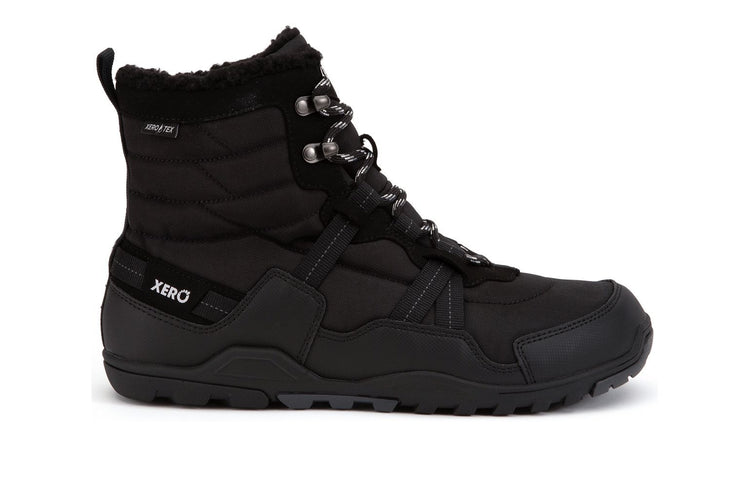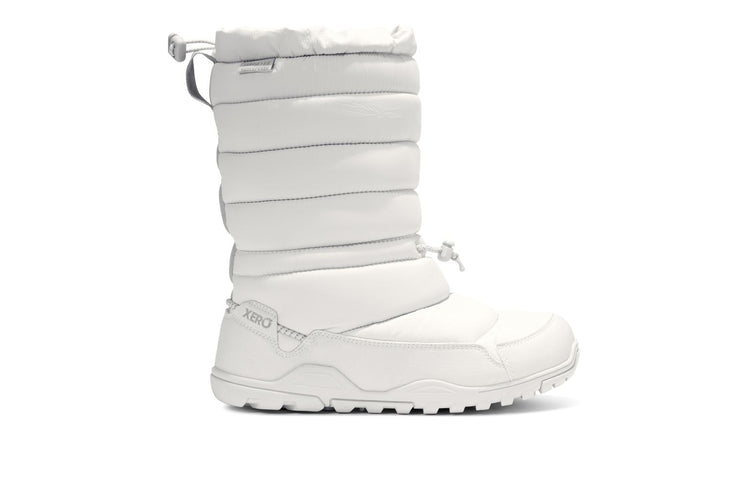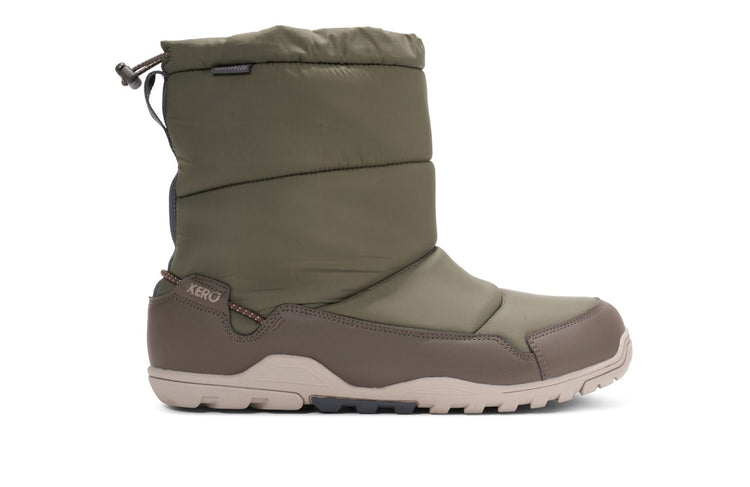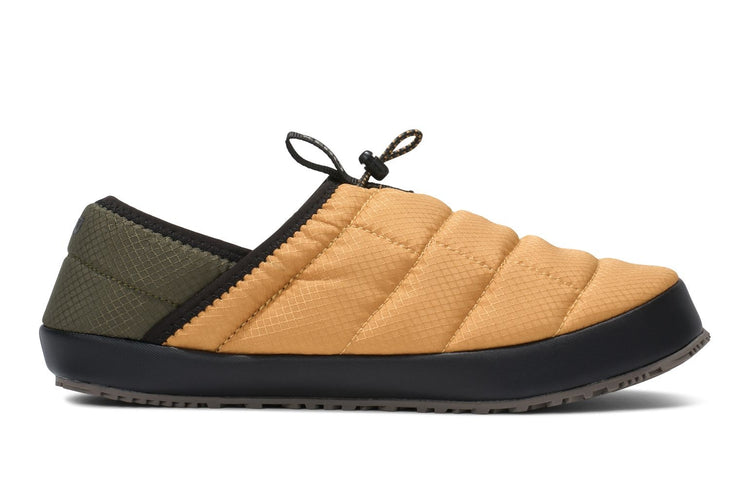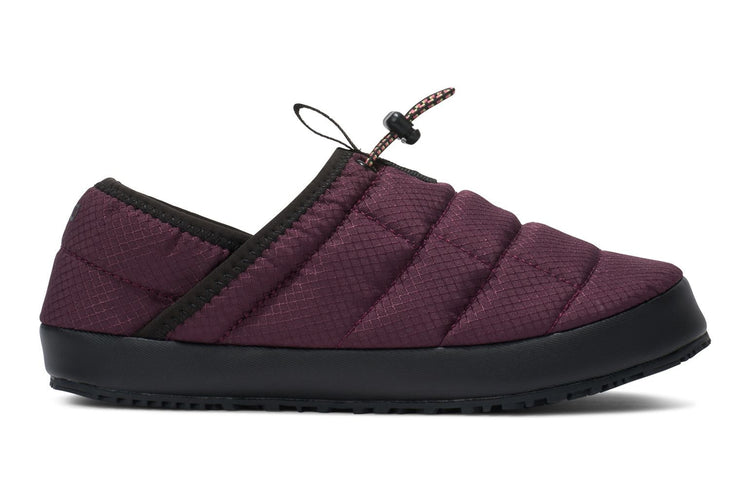latest News
Barefoot Running... The Movie!
I know many of you are eagerly waiting for the Born To Run movie (I am, too).Well, until that's out at your local gajillion-plex, check out this trailer of the new barefoot running movie by Michael Sandler and Jessie Lee, authors of Barefoot Running.I'm forever grateful to Michael and Jessie... when I decided to try running barefoot as a way to deal with my persistent running injuries, I was fortunate enough that they were teaching a workshop that very weekend, right in my backyard (metaphorically speaking... it was 3 miles away).Even more, after my first barefoot run, when I said to Michael, "Well, that was interesting, but I'm a sprinter, not a long, slow distance guy," he encouraged me to try it a few more times and, for some reason, I did.Then, Jessie, being a former sprinter herself, added a whole other level of fun when we would take off across some field, leaving the LSD runners in the dust ;-)Oh, and it was Michael saying, "If you had a website for these sandals you're making, I'd put you in our new book," that was the beginning of Xero Shoes!If you watch this trailer and don't want to book a ticket for the workshop where Michael and Jessie take you to all of these amazing locations, then there's something wrong with you (or you already live in Hawaii).I've seen clips from the entire movie and it's really something special. Enjoy.
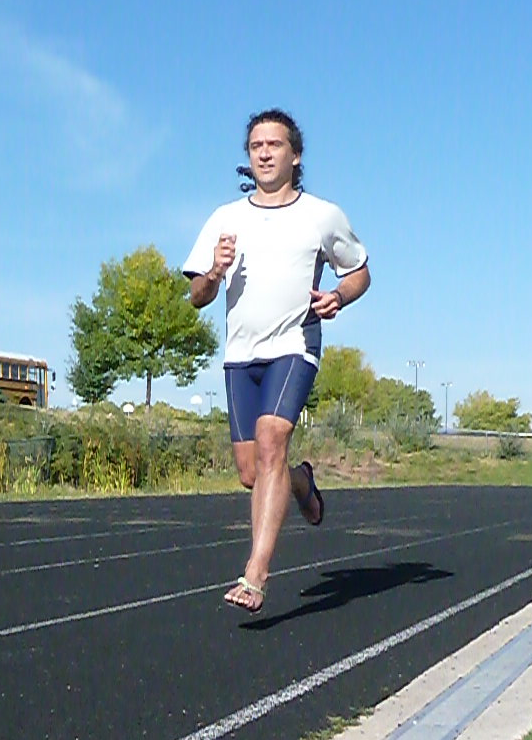
How To Run Barefoot
How to Run Barefoot: Techniques to Get Started “How do I start barefoot running?” “What’s the best book/course/coach for learning to run barefoot?” “Can you show me what the best barefoot running form looks like?” I get these questions a lot. And it’s a bit tricky to answer them for a few reasons: Frankly, if all you did was take off your shoes, go for a run, stop when it hurts, and experiment to find ways of running that feel light, easy and fun (which is the way running with natural form should feel), you would learn more than I, or anyone else, could tell you. Those of us who’ve observed barefoot runners and coached barefoot running are starting to notice the obvious: different runners have slightly different form. That is, when you look at the BEST runners, they have many things in common, but they’re not all doing the exact same thing. So, I don’t want to say something that isn’t going to be relevant for YOU. To be totally candid, I’m in an awkward political situation — as a guy who sells “barefoot-style” footwear, and who would like to have ALL the coaches referring their clients to me, I can’t single out one coach/book/technique over another (or one “under” another, either). I can tell you that if you listen to ALL of them, and then follow a bit of advice I’ll give, below, you’ll appreciate each coach for his/her unique contribution to your barefoot running form. Many runners aren’t aware of what their bodies are actually doing, so certain recommendations won’t be effective anyway. If I say to you, “don’t land on your heels,” and show you a video of how you’re “supposed” to land on your foot, you may be 100% convinced that you’re doing what I suggested, and then a video might show that you are totally heel-striking. In other words, what I say will be less important than what you learn on your own. However, what I CAN do is offer some thoughts about getting started with barefoot running. Tips on How to Run Barefoot Here are my best tips on how to get started running barefoot, refining your running technique, and enjoying the benefits and fun of barefoot running How to Getting Started Realize that the best coach you have is YOU and your sensations and whatever you can learn from watching video of yourself (especially slow motion video). In fact, you MUST become your own best coach, because no external coach will be there for every situation you’ll encounter as a runner. If you can’t listen to yourself, make adjustments in what you’re doing, and know when to STOP… no other coach will be helpful anyway. Start SLOWLY and build up. There’s no rush in making the transition to barefoot running. And there’s no way to predict how long it will take YOU. Run barefoot on a hard, smooth surface. These surfaces are best for learning because they give you the most feedback. Remember that barefoot running is a never-ending process. You can always improve. Refining Your Barefoot Running Form To be slightly more specific and technical, and tell you some of what you would discover on your own with enough time and attention: Aim for having your feet land “under your body” - more so than you’re probably used to. Landing with your foot out in front of you too much is “overstriding” and it’s one of the habits that most of us need to work to overcome. You may need to even exaggerate this to get the feel of it — put your feet “behind you” when you land. You won’t actually be able to do this, but if you try it will highlight what overstriding feels like… and the correct place to put your feet is probably somewhere in between. You want to land forefoot or midfoot. Do NOT reach out with your foot to do this; that’s the opposite of what you want to do. By the way, If you land with your foot underneath your body it's almost impossible not to land on your forefoot or midfoot. You don’t need to stay on the balls of your feet and put extra strain on your calves and Achilles tendons. Once you land on the ball/midfoot, you can let your heel drop if it feels better to do that, and it will feel better/worse depending on whether you’re going uphill or downhill or on a flat surface, and depending on what speed you’re running. Don’t PULL your foot toward you, or PUSH it behind you… that’ll cause blisters as well as put extra strain on your hamstrings (pulling) and calves (pushing). Think, instead, about PLACING your foot on the ground and LIFTING it off. And lift by using your hip flexor. That is, think about lifting your foot off the ground by lifting up your knee, not by pushing off the ground. Un-Plop your feet. This is hard to describe, but many of us slam our feet into the ground, or wait for the ground to hit our feet. We plop them onto the ground instead of meeting the ground lightly. There are a lot of “cues” coaches use to teach this: Pretend you’re running on hot coals, or on thin ice, or trying to sneak up on a deer, or that your feet are wheels and you want them to touch where the wheel meets the ground, or that the ground is moving below you like a treadmill and you want to move your feet at the same speed as the treadmill. You will need to find your own way to feel this. Keep your core tight… when you run, your body is a spring. If you collapse in your midsection, you’re weakening the spring and making it less efficient and, therefore, making it harder to run. Pick up your cadence. Most people think 180 steps-per-minute is some magic number. It’s not. Some successful runners do more, some do less. The point of moving your feet faster than you’re probably used to is that it gives you less time to keep your feet on the ground… and that’ll help you learn to place/lift, “un-plop” and not overstride. LISTEN to the sound your feet are making… if you’re running loudly, if you make a lot of noise when your feet hit the ground, you’re doing one of the above incorrectly. This is true if you’re barefoot, in our barefoot shoes, or any other footwear. You can run quietly (not silently), and quiet running is usually a sign of good form. WONDER! When I run, I keep a question in my mind, “How can I make this lighter, easier, and more fun… and, sometimes, faster?” Then, I experiment and see what I can find. Finally, and most importantly: REST. Bodies get stronger when you let them rest. There are no bonus points for not taking a day off. HAVE FUN! If it’s not fun, do something different. Try a different surface, a different speed, a different reason for running (compete if you haven’t before, do an obstacle course if you’re usually all about putting in mile after mile). I’m sure other barefoot runners have additional pointers. Can’t wait to hear them. Oh, and did I mention, barefoot running can be, should be, and IS (once you get it) FUN… don’t forget that! Want to learn more about learning how to barefoot running? Watch this video below The content of this post does not constitute and is not intended to be a substitute for professional medical advice, diagnosis or treatment. Always seek the advice of a physician or other qualified health provider with any questions or concerns you may have about your health or a medical condition.
Sh*t Barefoot Runners Say...
You're not a real barefoot runner if you haven't said one of these ;-)
4 Reasons NOT to Run Barefoot
[This post is guest-authored by our friend Rob Raux from www.shodless.com]Being barefoot and running barefoot is a blissful and consciousness-expanding endeavor. The feedback supplied from the ground is powerful enough to force even experienced runners to try it for only a mile or so, if they make it that far. Barefoot running, however wonderful, should not be subscribed to dogmatically.There are myriad resources available expounding on the benefits of being barefoot. Most of their reasons, methods, and warnings have merit. Unfortunately many of them sway to heavily towards the one-size-fits-all solution.Experiencing life unshod isn’t always the best option. Putting on a pair of huaraches or other minimalist shoes can serve a number of beneficial purposes: Technical Trail Running. Many people worry that the rocks, twigs, and roots on a trail make barefoot trail running impossible. Not true. First, you use your eyes and avoid what worries you. Second, your feet aren't rigid and can grab and grip and mold around many "obstacles."That said, while there’s nothing better than feeling the grass beneath your feet, having your heel land on an embedded rock leaves something to be desired. To be more specific, it could leave behind a bruise that will take at least a week to heal.That doesn’t include the chance of damaging the fatty tissue which protects your heel bone from impacting the ground. If any of this sounds painful, trust me, it’s worse than you’re picturing.A trail has hazards which you may not wish to risk if you're still an inexperienced barefooter. When a single false step means a week of no running, it’s just not worth it to be ideological about keeping yourself unshod. Additional mileage Your body may be able to take additional mileage, but the bottoms of your feet may not be ready to support it yet barefoot. Now, if you're looking to become a better barefoot runner, this is good news -- when your skin tells you to stop... STOP! Over time it'll adapt (not callous) and you'll be able to put in more miles.Until then, there’s nothing wrong with protecting your precious footsies, but only if you know your form is correct. If you are transitioning from shoes to barefoot and have yet to perfect the change from heel strike to mid foot strike or a forefoot strike, don’t ask for trouble by adding more miles in a minimalist shoe. You’ll find yourself injured promptly and thoroughly.If you are comfortable in your stride, you will find that your feet hit a natural point where further barefoot running may only lead to blisters (that usually means your form has broken down and you're pulling/pushing the ground, instead of placing/lifting). In these cases, adding a protective covering will give you the opportunity to add those additional miles you crave. Racing A foot covering increases your margin for error while running. Proponents of barefoot running tout the pain feedback loop as a beneficial aspect. Any foot covering blocks the pain receptors, which allow you to cause more damage to your body.In a race, this can be a necessary evil. A reduced pain feedback loop allows you to run a longer duration of more intensity. The covering may also absorb some of the mistakes you may have made barefoot (stepping on that rock in your mental fatigue).There’s obviously a very fine line to be ridden here, and one that you can certainly go too far with. Go with the least amount of covering possible and you should be able to dampen and absorb just the minimal amount of error to improve your results.I'd love to say, "If you're not comfortable running that distance, don't race that distance." But I know how some of us... I mean, YOU... can be ;-) The bitter cold Mother nature yields to no man. Don’t even think about getting the best of father winter.If you live in a climate that has a true winter, you know what frostbite feels like. Now try running barefoot.Amazingly, there are folks who do it, and enjoy it. And check out Steven shoveling snow in his huaraches. Frankly, I’ve tried it and even I think that’s crazy. Most people are going to need something to keep their feet protected from the elements (wind, snow, slush, etc.). Each person has a different tolerance, which will adapt as they get more comfortable with the colder weather.When dealing with the elements it’s best to be safer than pull up limp 3 miles from your house and walk the rest of the way home. The content of this post does not constitute and is not intended to be a substitute for professional medical advice, diagnosis or treatment. Always seek the advice of a physician or other qualified health provider with any questions or concerns you may have about your health or a medical condition.
Running Sandals for Health!
Yet another study showing how running sandals and barefoot running could be better for your body! Flip-flops and sneakers with flexible soles are easier on the knees than clogs or even special walking shoes, a study by Rush University Medical Center has found. And that's important, because loading on the knee joints is a key factor in the development of osteoarthritis. The study has been published online in the journal Arthritis Care & Research. "Traditionally, footwear has been engineered to provide maximum support and comfort for the foot, with little attention paid to the biomechanical effects on the rest of the leg," said Dr. Najia Shakoor, a rheumatologist at Rush and the primary author of the study. "But the shoes we wear have a substantial impact on the load on the knee joints, particularly when we walk." "Our study demonstrated that flat, flexible footwear significantly reduces the load on the knee joints compared with supportive, stable shoes with less flexible soles." Osteoarthritis is the most common form of arthritis and a significant source of disability and impaired quality of life. A higher-than-normal load on the knees during walking is a hallmark of the disease, associated with both the severity of osteoarthritis and its progression. Shakoor and her colleagues analyzed the gait of 31 patients with symptoms of osteoarthritis in the Rush Motion Analysis Lab while they walked barefoot and with four popular shoe types: Dansko clogs, which are often worn by healthcare professionals who have to be on their feet much of the day; Brooks Addiction stability shoes, which are prescribed for foot comfort and stability; Puma H-Street shoes, a flat athletic shoe with flexible soles; and flip-flops. The loads on the knee joints differed significantly depending on the footwear. For the clogs and stability shoes, the loads on the knee joints were up to 15 percent greater than with the flat walking shoes, flip-flops or barefoot walking. Knee loading was roughly the same whether the subject wore flips-flops or walked barefoot. "Currently, knee braces and wedged orthotic shoe inserts are used to relieve the load on the knee joints of patients with osteoarthritis, but everyday footwear is also a factor to consider. The results in our study demonstrate that the reduction in load achieved with different footwear, from 11 to 15 percent, is certainly comparable to reduction in load with braces and shoe inserts ," Shakoor said. According to Shakoor, several aspects of footwear affect the joint loading. "Heel height is one factor, and may explain why the stability shoes and clogs in our study, both of which had higher heels, produced greater knee loads," Shakoor said. "Stiffness is also a factor. We've shown in earlier studies that barefoot walking is associated with lower knee loads than walking with conventional footwear. It may be that the flexible movement of the bare foot is mechanically advantageous. The natural flex of the foot when it contacts the ground probably attenuates the impact on the joint, compared to the artificial 'stomping' movement created by a stiff-soled shoe." In the present study, Shakoor said, flip-flops and the walking shoe were flat, flexible and lightweight and seemed to mimic the mechanics when walking with bare feet. "Clogs and stability shoes, conventionally believed to provide appropriate cushioning and support, actually increased the loading on the knee joints, as opposed to shoes with less 'support,' flatter heels and more flexibility," Shakoor said. Shakoor cautioned, however, that knee loading is not the only consideration in any clinical recommendations based on her study. "For the elderly and infirm individuals, flip-flops could contribute to falls because of their loose-fitting design. Factors like these need to be taken into account," Shakoor said. Other researchers at Rush involved in the study were Dr. Mondira Sengupta, Dr. Kharma Foucher, Markus Wimmer, PhD, Louis Fogg, PhD, and Dr. Joel Block. Funding was provided by a grant from the National Institute of Arthritis and Musculoskeletal and Skin Diseases, part of the National Institutes of Health. Source Rush University Medical Center, Chicago, Illinois The content of this post does not constitute and is not intended to be a substitute for professional medical advice, diagnosis or treatment. Always seek the advice of a physician or other qualified health provider with any questions or concerns you may have about your health or a medical condition.

